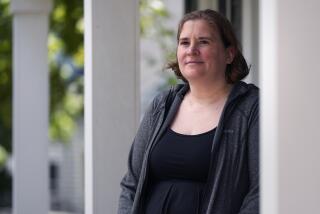A Winning Recipe : 22,000 Students Get 2 Free Meals Daily in Compton School District
- Share via
It’s Monday morning and, like clockwork, Tommie Callegari heads down a narrow street to a beige, weather-beaten building to begin her daily task of feeding 22,000 schoolchildren.
As director of Compton Unified School District’s lunch program, Callegari oversees one of the few programs in the state that provides breakfast and lunch without charge to all students. About 90% of families in the area are low income and are eligible for free meals from the state, and the district pays for the rest.
In recent years the school district’s food program has been fraught with problems: a multimillion-dollar deficit and sagging employee morale. In addition, many students refused the lunches.
In two years, Callegari has made the program profitable, increased workers’ enthusiasm and improved the menu, according to state officials. The lunch program also is also gaining popularity among students. About 4,000 more students are eating in school cafeterias now than when Callegari took over two years ago.
She encourages each school’s cafeteria staff to prepare items from scratch, which is less expensive than using prepared foods such as chicken patties and fish sticks. Workers chop the onions, peppers and various vegetables for fajitas and other items.
Workers are also encouraged to use their own recipes whenever possible. Items such as rice pudding, sweet potato cake and whole-wheat cookies have begun appearing on school menus.
Callegari said she wanted to give her staff a chance to be creative, “of not just serving like robots but being able to put a little bit of themselves into (the job).” She added that home-style cooking has also made student meals more nutritious. Staff is able to control the amount of salt, fat and sugar in recipes.
The effort paid off when the district received the state Department of Education’s outstanding school lunch program award this year.
“They had such a remarkable improvement in the way they were organized, the initiative of the staff, the atmosphere that the staff worked under,” said state evaluator George Schaedler.
“Without doubt this is the most improved program I have reviewed in 15 years on the job,” he wrote in his report. “Many of the staff at the sites who are now doing excellent jobs meeting federal and state requirements are the same ones who did not do this under previous administrations. This proves to me that the talent was always there at Compton, but the leadership in the past had failed in their task.”
In 1989, when the district first began offering free meals to all students, it hired a management firm to run the school cafeterias. School officials hoped to save money by bringing in outside expertise. But after three years, the program had run up $4 million in deficits, mostly due to poor record-keeping, according to district officials. The district ended the contract with United School Food Services and hired Callegari, a consultant with the state Department of Education, to manage the program.
She took a one-year leave of absence from her state job, but later resigned to accept the district position permanently. “I enjoyed that (state) work, but this was an opportunity to be able to do some of the things we told others they needed to be doing,” she said.
On a recent visit to Abraham Lincoln Elementary School, Callegari surveyed cafeteria workers as they served a procession of first-graders. She moved briskly and spoke softly while keeping a watchful eye on the students.
“I look at what they eat and how much food they’re throwing away,” Callegari said. “That way I get an idea of what they like or don’t like or if we’re serving portions that are too large.”
That day, most of the pint-size students finished their low-fat hamburgers and oven-baked french fries. However, some threw out their rice pudding and sliced peaches, prompting Callegari to comment on how finicky children can be.
“Next, we’ll see how they like asparagus,” she quipped.
One of the key reasons for the program’s growing popularity among students is a new computerized record-keeping system that keeps track of meals served to low-income students without singling them out as they go through the lunch lines. The district has to record the number of meals served to low-income students to qualify for state funds for the meals.
“In elementary school, the kids don’t really care that it’s a free meal,” Callegari said. “When they get to middle school they begin to care a little more that it’s a free meal. And by the time they get to high school they freak out if it’s a welfare program.
“We’re very proud of our food service but we also want our students to be able to partake of it in a very dignified way,” she said. Even hungry children will pass up eating if there’s a possibility that they’re going to be picked on by their peers, she added.
Back in her modest, wood-paneled administrative office, Callegari beams while describing her plan to establish a districtwide nutrition program that would educate children about the value of good eating habits and the long-range effects diet has on health.
“It is a dream of mine to make a lasting impression,” she said, smiling.
More to Read
Eat your way across L.A.
Get our weekly Tasting Notes newsletter for reviews, news and more.
You may occasionally receive promotional content from the Los Angeles Times.










